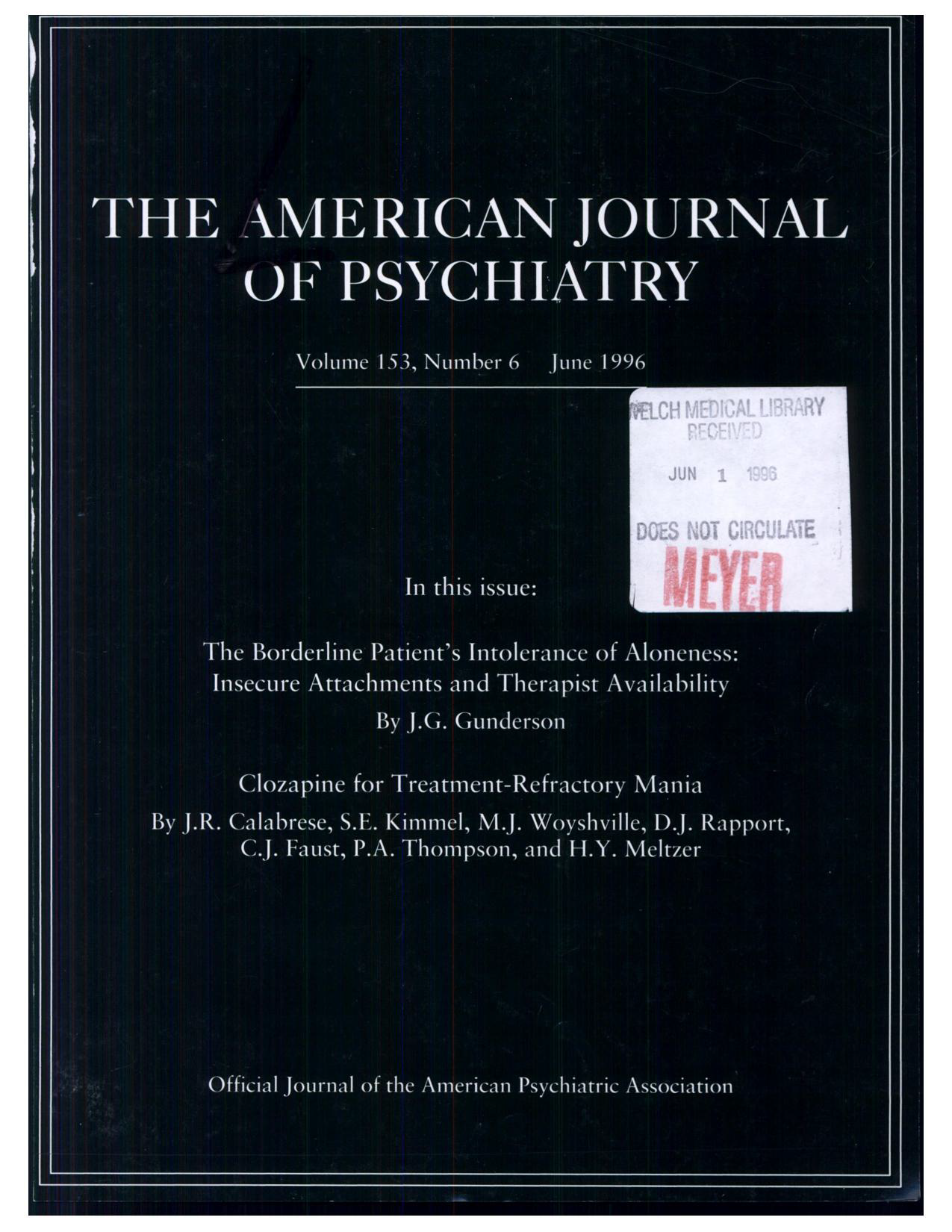Prospective evaluation of panic potentiation following 35% CO2 challenge in nonclinical subjects
Abstract
OBJECTIVE: The authors examined the effect of panic provocation on the subsequent development of panic attacks and panic disorder in nonclinical subjects with no history of spontaneous panic. METHOD: Sixty-two subjects who had completed a study examining fearful responses to a single vital capacity inhalation of 35% CO2 were reevaluated 1 year following the challenge test. RESULTS: Challenge- induced panic was not related to the later development of panic or panic disorder. According to the Structured Clinical Interview for DSM- III-R--Non-Patient Edition, none of the subjects met DSM-III-R criteria for panic disorder and only six subjects reported spontaneous panic during the year after panic provocation. Of the six subjects who experienced spontaneous panic, two had panicked in response to the CO2 challenge. CONCLUSIONS: The experimental provocation of panic in nonclinical subjects appears to be a safe research paradigm for exploring the psychopathogenicity of panic disorder.
Access content
To read the fulltext, please use one of the options below to sign in or purchase access.- Personal login
- Institutional Login
- Sign in via OpenAthens
- Register for access
-
Please login/register if you wish to pair your device and check access availability.
Not a subscriber?
PsychiatryOnline subscription options offer access to the DSM-5 library, books, journals, CME, and patient resources. This all-in-one virtual library provides psychiatrists and mental health professionals with key resources for diagnosis, treatment, research, and professional development.
Need more help? PsychiatryOnline Customer Service may be reached by emailing [email protected] or by calling 800-368-5777 (in the U.S.) or 703-907-7322 (outside the U.S.).



